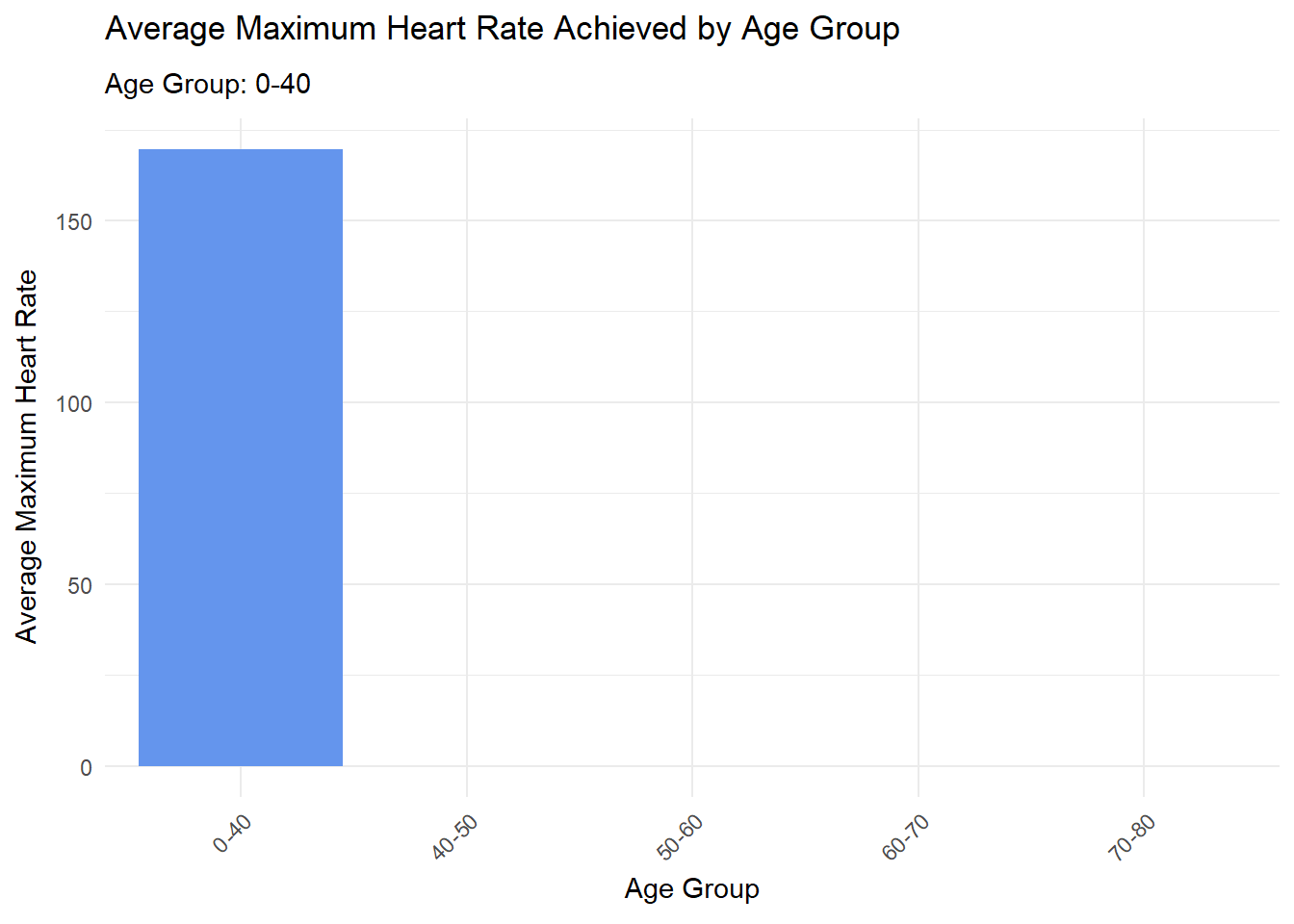
INTRODUCTION
Heart attacks are a leading cause of death worldwide, making it crucial to understand their causes. Using data from Kaggle, this analysis examines how age, cholesterol levels, chest pain, and heart rate affect heart attack risk. Our goal is to identify these key factors and their interactions to answer the question:
What are the most significant predictors of heart attacks?
Answering this question helps healthcare professionals identify key risk factors for prevention and prediction.
To start, this graph explores the frequency of heart attacks among males and females.
- Males have more than double the frequency of heart attacks compared to females.
- Highlights gender disparities in heart attack prevalence.
This plot shows the distribution of maximum heart rates across different age groups.

- The plot shows that younger groups (0-40) have higher maximum heart rates, while older groups (60-70, 70-80) have lower rates.
- Lower maximun heart rates are associated with heart attacks.
This graph reveals the distribution of cholesterol levels among heart attack victims in the dataset.

- Cholesterol levels of victims are predominantly between 200 and 240 mg/dL.
- Indicates common cholesterol levels in the dataset.
- Guides general health recommendations and interventions.
Learn more about Cholesterol and Heart Health